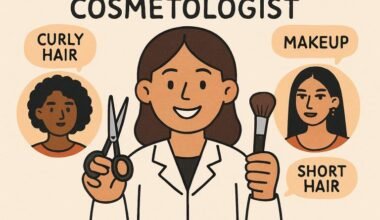Modern medicine has helped transform and improve the lives of many people who would have otherwise been severely ill or who might have passed away prematurely. According to the Centers for Disease Control and Prevention (CDC) and the National Institutes of Health (NIH), breakthroughs in modern medicine have contributed to improved diagnosis and treatment of many diseases, disease prevention and management, and surgical outcomes. All of these have contributed to increased life expectancy and a markedly better quality of life for millions of people.
One area in which modern medicine has made a significant impact on people’s lives is in the treatment of hormone imbalances, particularly low testosterone. For those unaware, testosterone is an androgen hormone secreted by the Leydig cells within the testes and the adrenal glands in men. It is involved in the development and maintenance of male reproductive organs and male secondary characteristics, such as facial hair, a deep voice, and body fat distribution. When testosterone levels in the male body are too low, it can trigger numerous symptoms that can adversely affect a man’s sexual function, physical appearance, and overall health.
How Common Is Low Testosterone?
Low testosterone, also known as hypogonadism, is quite common in the U.S., especially among middle-aged men. One study published by the University of North Carolina School of Medicine found that roughly 39% of men aged 45 and older have low testosterone. That’s not overly surprising when you consider that testosterone production in the male body naturally declines by as much as 1% per year after age 30. Along with aging, low testosterone among men can also stem from genetic conditions, certain medications and medical conditions, and poor lifestyle habits, such as smoking, excessive alcohol consumption, obesity, and leading a sedentary lifestyle.
What Are Considered Low Testosterone Levels in Men?
According to most endocrinologists and data from several studies, healthy blood testosterone levels in men are between 300 and 1,000 nanograms per deciliter (ng/dL). When blood testosterone levels fall below 300 ng/dL, most men will experience the following symptoms:
- Bone loss
- Decreased libido
- Depression
- Erectile dysfunction
- Fatigue
- Infertility
- Reduced muscle mass
- Thinning body hair
- Weight gain
How Modern Medicine and Healthy Lifestyle Habits Can Boost Low Testosterone in Men
For most men with mildly low testosterone levels in their blood, adopting healthy lifestyle habits can prove beneficial. Some of these include consuming a healthy, well-balanced diet and getting a good night’s sleep each night, ideally 7 to 9 hours. Not smoking, exercising regularly, maintaining a healthy body weight, and minimizing stress in one’s life can also help boost or normalize low blood testosterone levels.
Unfortunately, healthy lifestyle habits alone might not be enough for men with severely low testosterone levels. Fortunately, testosterone replacement therapy (TRT) is one breakthrough in modern medicine that can help men with extremely low testosterone levels. TRT involves using prescription medication to stimulate the testes, adrenal glands, and, to some extent, the hypothalamus and pituitary gland to ramp up the production and secretion of testosterone into the blood. Some of these FDA-approved, prescription-based medications include the following:
- Androderm
- AndroGel
- Aveed
- Delatestryl
- Fortesta
- Testim
- Testoderm
- Testopel
- Vogelxo
The Dark Side of Modern Medicine: How Misusing or Abusing TRT Medications Can Negatively Impact Your Health
To reap the therapeutic benefits of TRT medications, men should only take them if they have been diagnosed with low testosterone by a licensed physician. And they should only be taken as prescribed. Failing to do either of these can cause numerous health problems. Studies show that misusing or abusing testosterone-boosting medications can increase the risk of cardiac arrest, myocardial infarction, hypertrophic cardiomyopathy, and congestive heart failure. It can also increase the risk of psychiatric manifestations, such as major depression and mania.
While we are on the topic, it is worth noting that some people unwittingly misuse TRT medications, which can happen when they research how to get testosterone online and buy from pharmacies that sell these prescription-based medications without requiring a prescription or, worse yet, knowingly sell counterfeit and unsafe drugs.
Consequences of Misinformation and Quick Decisions
Misinformation and making quick, uninformed decisions can result in numerous health problems when it comes to testosterone replacement therapy, some of which can be just as impactful as those associated with misuse and abuse. Studies show that misinformation and quick decisions can lead to some men minimizing the potential side effects and risks associated with TRT, such as cardiovascular problems, infertility, liver damage, mental health problems, and more.
In summary, TRT-based medications can help men struggling with low blood testosterone levels. However, they can do more harm than good when men do not take them as prescribed or take them without being formally diagnosed with low testosterone. To learn more or to find out what approach to boosting low testosterone levels is right for you, consider scheduling an appointment with a physician today.



